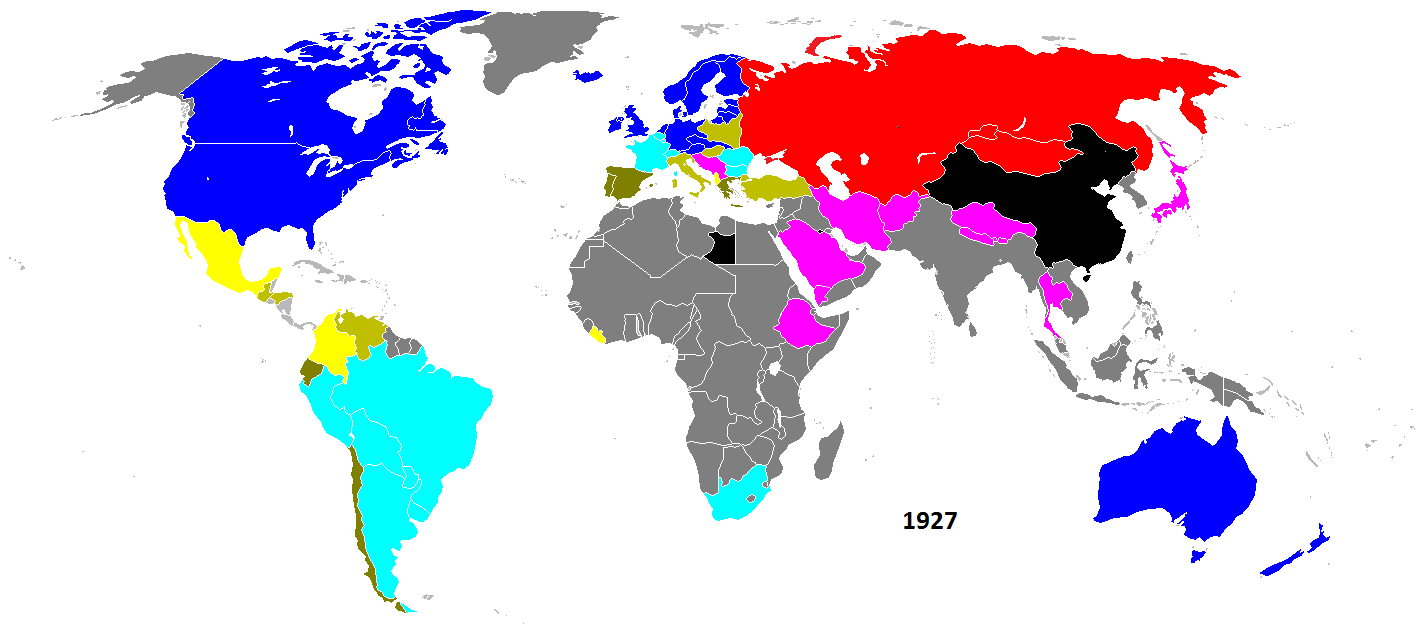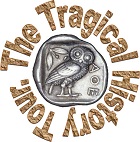
Chapter Twenty-one
The 1920s: Postwar Democratic Surge
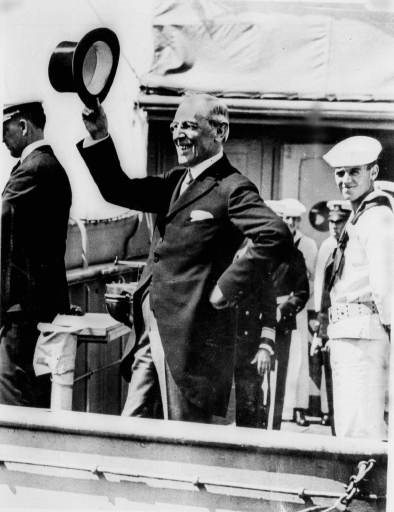 After
the ceasefire, delegates from the warring countries gathered
in former royal estates around Paris to negotiate peace
treaties. The fate of Turkey was decided at Sevres, the fate
of Hungary at Trianon, and everyone decided what to do about
Germany at Versailles. The losers had to pay the winners for
all the trouble they had caused. They were stripped of their
armies and of their subjugated minorities. Some of these
minorities (Poles, Czechs) got their own republics; others
(Croats, Alsatians) were attached to victorious, ethnically
similar neighbors; while still others (Arabs, Africans) were
bundled into the colonial empires of the winning powers.
After
the ceasefire, delegates from the warring countries gathered
in former royal estates around Paris to negotiate peace
treaties. The fate of Turkey was decided at Sevres, the fate
of Hungary at Trianon, and everyone decided what to do about
Germany at Versailles. The losers had to pay the winners for
all the trouble they had caused. They were stripped of their
armies and of their subjugated minorities. Some of these
minorities (Poles, Czechs) got their own republics; others
(Croats, Alsatians) were attached to victorious, ethnically
similar neighbors; while still others (Arabs, Africans) were
bundled into the colonial empires of the winning powers.
The First World War was the type of war in which the last man standing won, and as the United States was clearly the Last Man Standing, American President Woodrow Wilson got to move his wishlist to the top of the agenda at the peace conference.① He had always declared that the purpose of the war was to make the world safe for democracy, and sure enough, the number of democracies in the world surged forward from 13 in 1912 to 23 in 1922, reaching the highest percentage of independent nations (35%) that the world would see until 1990.Ⓐ Democracy even began to transcend national boundaries when the peace treaty established the League of Nations, an international legislature where global disputes might be resolved without bloodshed.
In fact, some of the new republics that emerged in the immediate post-war era probably count as the first governments in history to actually fit all our modern expectations of democracy. Arising from fallen empires, they began with a clean slate and didn’t have the baggage older countries did. They had less need to insert special clauses into their constitutions to accommodate stray relics of an earlier power structure such as the church or nobility, and they could incorporate the latest trends in self-government with fewer compromises. Previous nations always had one or two flaws we have to overlook if we want to call them democratic – no voting for women mostly, but indirect elections, property qualifications, racial restrictions, poll taxes, rotten boroughs and, of course, slavery would also earn a stern letter from the UN nowadays. The new republics of central Europe, however, manifested all the requirements we’d expect for a free society nowadays, including universal suffrage for both men and women.②
Of course, some lightly populated entities on the edge of civilization already offered the full package of modern civil rights, but these were either monarchies (Norway), not independent (Wyoming) or both (New Zealand, Australia and Finland). We tend to give monarchies a pass because of tradition, but let’s be honest; a nation cannot be counted as fully democratic if the ultimate authority of the state is in the hands of one preordained individual who can never be lawfully challenged or replaced, is often exempt from taxation, lawsuits and public opinion, and is usually required to follow a specific religion, be male, and not be born out of wedlock. We aren’t allowed to fill lesser jobs that way, so why make an exception for the head of state?③
The world was definitely turning away from monarchies. When the Twentieth Century began, monarchy was the default setting for any new government setting itself up in Europe. No one could imagine it any other way. Greece had chosen a king shortly after achieving its independence in 1829; as did Belgium in 1831. When Norway broke from Sweden in 1908, it became a monarchy; so did Albania when it broke from Turkey in 1913. In 1900 there were only a handful of republics in the whole Eastern Hemisphere (France, Switzerland and tiny San Marino in Europe; the ex-slaves in Liberia and the two doomed Boer republics in Africa).
However, as more power was transferred from monarchs to legislatures, it seemed increasingly silly to keep pampered royal families on the payroll. As the century progressed, most new countries would become republics right from the start, and many older countries would get rid of their monarchies whenever they were offered a choice. Every decade from the 1910s to the 1970s would see at least one royal family lose its job.
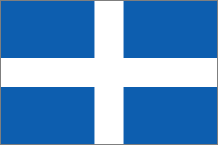 The
most obvious risk with monarchies is that one little accident
in the life of one frail human can have massive global
repercussions. For example, in 1920 King
Alexander of Greece was bitten by a palace monkey
while breaking up a fight between the monkey and his dog. He
thought the wound was no big deal, but sepsis set in and he
shortly died. His father,
The
most obvious risk with monarchies is that one little accident
in the life of one frail human can have massive global
repercussions. For example, in 1920 King
Alexander of Greece was bitten by a palace monkey
while breaking up a fight between the monkey and his dog. He
thought the wound was no big deal, but sepsis set in and he
shortly died. His father, 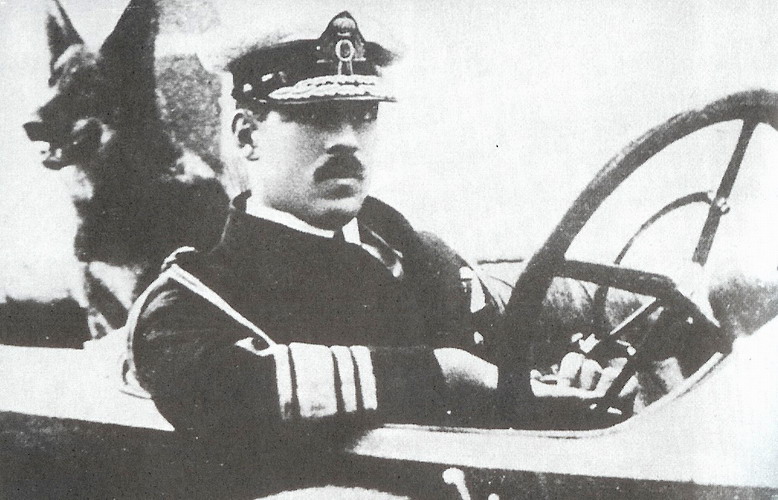 former king Constantine,
returned to power, still annoyed at his son for taking the
throne away from him during the First World War. King
Constantine purged all his son’s friends and followers from
power and unpacked his old cronies from mothballs.
Unfortunately, Greece
was at war with Turkey again, and the purge meant that
Constantine replaced all of Greece’s experienced generals with
inept political generals who had missed the tactical lessons
of World War One. This led to a massive slaughter and collapse
of Greek armies all across the front. After a long retreat,
the Greek soldiers abandoned Turkey, leaving behind hundreds
of thousands of local Greek residents to face Turkish
retaliation.
former king Constantine,
returned to power, still annoyed at his son for taking the
throne away from him during the First World War. King
Constantine purged all his son’s friends and followers from
power and unpacked his old cronies from mothballs.
Unfortunately, Greece
was at war with Turkey again, and the purge meant that
Constantine replaced all of Greece’s experienced generals with
inept political generals who had missed the tactical lessons
of World War One. This led to a massive slaughter and collapse
of Greek armies all across the front. After a long retreat,
the Greek soldiers abandoned Turkey, leaving behind hundreds
of thousands of local Greek residents to face Turkish
retaliation.
The angry survivors of the military debacle came home and threw out King Constantine in September 1922. This coup sparked another few years of instability as Greece went through another king, then a chaotic republic under a scattering of weak coalition parliaments, and finally a military dictator to restore order. The dictator, General Theodoros Pangalos, was soon ousted by a counter-coup when he got Greece mixed up for no good reason in the War of the Stray Dog.④ After this, Greece finally got a stable democratic republic up and running again towards the end of 1926.
Germany under the Weimar Constitution
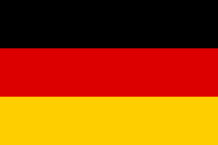 When
I say that the Weimar Republic was among the world’s first
real democracies, I’m not just assigning bragging rights. I
also mean that they were groping in the dark into unknown
territory. Until the First World War, the most stable
democratic nations had been constitutional monarchies. These
had been built around the old royal power structure, which
gave them an anchor in an emergency. Republics like France,
Columbia, Mexico and the United States had a well-deserved
reputation for instability, and they had all seen plenty of
coups, juntas, assassinations and civil wars. In fact,
presidential assassinations had become so common in the United
States that one statesman, Robert Todd Lincoln, had
coincidentally been on hand for three of them and finally
stopped accepting invitations to presidential functions in
order to avoid the jinx that followed him around.⑤ No one had entirely figured out how to
have a stable government without a divinely-appointed monarch
at the head.
When
I say that the Weimar Republic was among the world’s first
real democracies, I’m not just assigning bragging rights. I
also mean that they were groping in the dark into unknown
territory. Until the First World War, the most stable
democratic nations had been constitutional monarchies. These
had been built around the old royal power structure, which
gave them an anchor in an emergency. Republics like France,
Columbia, Mexico and the United States had a well-deserved
reputation for instability, and they had all seen plenty of
coups, juntas, assassinations and civil wars. In fact,
presidential assassinations had become so common in the United
States that one statesman, Robert Todd Lincoln, had
coincidentally been on hand for three of them and finally
stopped accepting invitations to presidential functions in
order to avoid the jinx that followed him around.⑤ No one had entirely figured out how to
have a stable government without a divinely-appointed monarch
at the head.
The Weimar constitution handed out seats in the lower house of parliament (the Reichstag) according to the percentage that each party got in the voting. If a party got 3% of the vote, it got 3% of the seats. Thirty percent of the vote earned 30% of the seats. That sounds fair – and indeed, it is fair – but this meant there was no real advantage to actually winning the election. Falling one point short of your opponent only meant you were one point short -- unlike, for example, the system of winner-take-all geographic constituencies at work in the United States. There were over a dozen parties with seats in the Reichstag, representing every crackpot view that could attract the support of a few hundred thousand people no matter how widely scattered or removed from reality. Not only were these splinter parties not penalized for draining votes away from larger parties, they became major power brokers, selling their one or two percent to the bigger parties in exchange for major concessions out of proportion to their real popularity. (Later democracies would learn to weed out splinter parties by setting a higher threshold for winning seats in parliament, and they would deal winning parties a stronger hand by giving them bonus seats above their actual percentage, or by using geographic representation.)
It didn’t help the governing process that many popular parties in Germany opposed the very idea of democracy. On the left were the communists (9% of the vote in 1924); on the right were the monarchists and militant nationalists (25% of the vote in 1924). The ongoing refusal of extremists who occupied one-third of the seats in the Reichstag to cooperate with any democratic government would be a constant handicap to the Weimar Republic.
Four parties in the moderate center together usually eked out a bare majority in parliament willing to work within the system for the public good, but they often stalled and collided over the methods and goals. The Social Democrats of the moderate left wing were the largest single party in Germany, polling about one out of every four voters. The aptly named Center Party held the center-right of the spectrum and generally represented the Catholic minority of Germany. The German People's Party and the German Democratic Party, two small parties of free-market liberals made of fragments from the defunct National Liberal Party, were also willing to work within the democratic system. Together these four parties (called the Grand Coalition) collected 56% of the vote in December 1924.
!["Ribbit" [Ebert]](images/1919Friedrich_Ebert_face.jpg) With
parliament hopelessly deadlocked most of the time, the
president usually took over governing Germany by executive
order. He was not technically supposed to do this, but Germans
had a tradition of autocratic strongmen like Bismarck so
everyone went along. The first president was Friedrich
Ebert of the Social Democrats, former chancellor
under the Kaiser who was elected to the presidency in February
1919, a month after he unleashed the Freikorps on the
Spartakists. Much of his term was spent staving off civil war
and listening to the Reichstag bicker. A squat, froggish,
middle-of-the-road statesman of the old school, Ebert was
firmly committed to preserving the republic, but he died in
office from a burst appendix in February 1925, leaving Germany
without even a president to run things.
With
parliament hopelessly deadlocked most of the time, the
president usually took over governing Germany by executive
order. He was not technically supposed to do this, but Germans
had a tradition of autocratic strongmen like Bismarck so
everyone went along. The first president was Friedrich
Ebert of the Social Democrats, former chancellor
under the Kaiser who was elected to the presidency in February
1919, a month after he unleashed the Freikorps on the
Spartakists. Much of his term was spent staving off civil war
and listening to the Reichstag bicker. A squat, froggish,
middle-of-the-road statesman of the old school, Ebert was
firmly committed to preserving the republic, but he died in
office from a burst appendix in February 1925, leaving Germany
without even a president to run things.
!["Harrumpf" [Hindenburg]](images/1925Paul_v._Hindenburg.jpg) The
first round of voting for a new president took place on March
29, 1925. When none of the 17 candidates running for president
got a majority, Germany tried again, hoping to thin the herd.
The far right wing coalition that had come closest to winning
the first round now replaced its original candidate with Paul von Hindenburg, the
bristly former field commander of the German Army in World War
One. An unapologetic monarchist who was unimpressed by
democracy, Hindenburg had not run in the first round. In fact
his commitment to democracy was so tepid that he asked the
former Kaiser for permission to run for president before he
agreed to it this time. Hindenburg’s name drew in a number of
splinter conservative parties that had originally run their
own candidates. On the far left, the Communist candidate,
Ernst Thälmann, stubbornly stayed in the race, preventing the
Social Democratic candidate (#2 in the first round) from
boosting his vote leftward, so the Social Democrats dropped
out and threw their support to the candidate of the moderate
right-wing Center Party (#3 in the first round). Even so, when
the second round came on April 26, the far right still polled
ahead of anyone else, and Hindenburg became president at the
age of 77.
The
first round of voting for a new president took place on March
29, 1925. When none of the 17 candidates running for president
got a majority, Germany tried again, hoping to thin the herd.
The far right wing coalition that had come closest to winning
the first round now replaced its original candidate with Paul von Hindenburg, the
bristly former field commander of the German Army in World War
One. An unapologetic monarchist who was unimpressed by
democracy, Hindenburg had not run in the first round. In fact
his commitment to democracy was so tepid that he asked the
former Kaiser for permission to run for president before he
agreed to it this time. Hindenburg’s name drew in a number of
splinter conservative parties that had originally run their
own candidates. On the far left, the Communist candidate,
Ernst Thälmann, stubbornly stayed in the race, preventing the
Social Democratic candidate (#2 in the first round) from
boosting his vote leftward, so the Social Democrats dropped
out and threw their support to the candidate of the moderate
right-wing Center Party (#3 in the first round). Even so, when
the second round came on April 26, the far right still polled
ahead of anyone else, and Hindenburg became president at the
age of 77.
While all this was going on, Germany was being hit with problems from many different directions. The First World War had left Germany with a mountain of debt – a double debt, in fact. Germany had paid for its own war effort purely by borrowing, expecting to pass the cost onto its defeated enemies. Now, not only did the government find its own war debt still hanging over it, the victorious Allies expected the Germans to pay the Entente’s bills as well with reparations, which included costs, damages and punitive fees. Rather than pay these debts with real money by raising taxes, Germany chose to print more money to pay the internal debt, and then borrow enough foreign cash to pay the foreign debt. None of these solutions created real wealth; they merely undermined the value of German money.
In January 1923 after the Germans fell behind on one of their reparation payments, French and Belgian troops crossed the border to occupy the major German industrial centers in the Ruhr Valley and extract the payment by direct confiscation. Germany had no army strong enough to oppose the French directly, but the government encouraged workers in the Ruhr to go on strike. A general air of non-compliance and passive resistance spread throughout the conquered populace. In March, German workers blocked French soldiers from seizing trucks from the Krupp factory in Essen. A long standoff stretched across many hours until an impatient French machine gunner opened fire on the strikers, killing 13. This was the first of several clashes across the whole period of occupation which would eventually kill some 130 Germans, so it was definitely not a bloodless occupation.⑥
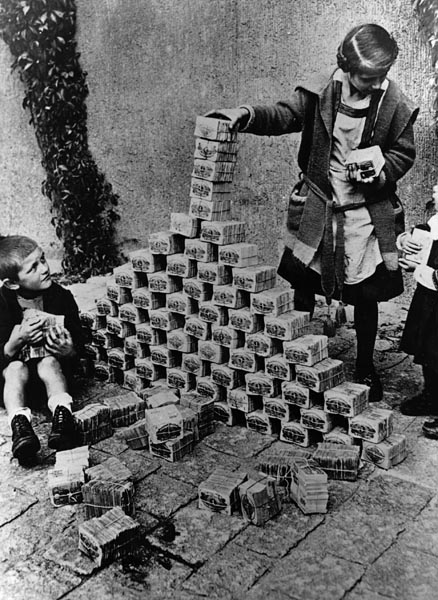 With
2 million workers on strike and starving, the German
government tried to help out by giving the strikers a small
stipend. Unfortunately, the economy was already crippled by
the occupation and strike, so Berlin could only pay for these
subsidies by printing new money; however, flooding the market
with more unsupported paper money inflated away all the fixed
incomes, contract prices and bank accounts in Germany. It
impoverished the country.Ⓑ
The Weimar Republic’s hyperinflation is legendary in economic
history. Four trillion German marks could buy one American
dollar. A wheelbarrow of cash bought a loaf of bread. Paper
money was cheaper than wallpaper and ended up pasted on
people’s walls. The price of a meal could multiply
exponentially between appetizers and dessert. To say that this
undermined faith in the system is an understatement.
With
2 million workers on strike and starving, the German
government tried to help out by giving the strikers a small
stipend. Unfortunately, the economy was already crippled by
the occupation and strike, so Berlin could only pay for these
subsidies by printing new money; however, flooding the market
with more unsupported paper money inflated away all the fixed
incomes, contract prices and bank accounts in Germany. It
impoverished the country.Ⓑ
The Weimar Republic’s hyperinflation is legendary in economic
history. Four trillion German marks could buy one American
dollar. A wheelbarrow of cash bought a loaf of bread. Paper
money was cheaper than wallpaper and ended up pasted on
people’s walls. The price of a meal could multiply
exponentially between appetizers and dessert. To say that this
undermined faith in the system is an understatement.
Finally, new currency was printed and issued in November 1923. It was tied to the price of rye grain, which had a steady supply and demand that would not fluctuate wildly. This stabilized the German economy and stopped the runaway inflation. Meanwhile, by August 1924, all the Western powers had agreed to a new plan negotiated by the American banker Charles G. Dawes which eased up Germany’s reparations payments and ended the occupation. Dawes won the Nobel Peace Prize for this in 1925.
New Enemies: Fascism and Communism
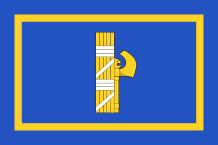 Although
democracy was on the upswing and monarchy was in retreat, a
couple of new forms of government emerged in the post-war
world to challenge democracy's ascendancy. In 1922, Russia
pulled out of its years of chaos with a new name - the Soviet
Union - and a new
Although
democracy was on the upswing and monarchy was in retreat, a
couple of new forms of government emerged in the post-war
world to challenge democracy's ascendancy. In 1922, Russia
pulled out of its years of chaos with a new name - the Soviet
Union - and a new 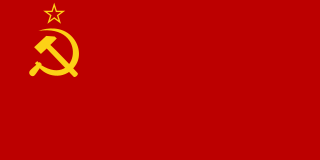 Communist
government that would attempt to level the extremes of rich
and poor by restructuring the whole of society and bringing
the entire economy under state control. The same year in
Italy, the Fascist Party came to power on the promise of
restoring the lost glories of the nation by subordinating the
individual to the people, the state and the leader. Both
ideologies felt that democracy had been a failed experiment by
a corrupt and decadent world. The Communists considered
democracy to be a puppet show with strings pulled by the
wealthy, so they kept decision-making in the hands of people
who had proven that they properly understood Communist Party
dogma. The Fascists felt that democracy let the weak
multitudes impose their flaws on the rest of society. Of the
two new challengers, Fascism proved to be the most successful
at first.
Communist
government that would attempt to level the extremes of rich
and poor by restructuring the whole of society and bringing
the entire economy under state control. The same year in
Italy, the Fascist Party came to power on the promise of
restoring the lost glories of the nation by subordinating the
individual to the people, the state and the leader. Both
ideologies felt that democracy had been a failed experiment by
a corrupt and decadent world. The Communists considered
democracy to be a puppet show with strings pulled by the
wealthy, so they kept decision-making in the hands of people
who had proven that they properly understood Communist Party
dogma. The Fascists felt that democracy let the weak
multitudes impose their flaws on the rest of society. Of the
two new challengers, Fascism proved to be the most successful
at first.
Nationalism had been one of the major ideologies driving politics in the nineteenth century, but as time passed it often went beyond simple flag waving and became more obsessive. The newest countries became especially fanatical about it. Germany and Italy, for example, had long been divided and frequently conquered by outsiders, and Japan had been isolated from the world for centuries, but now intensive nationalism rallied these people around a state that hadn’t even existed a couple of generations earlier.
As nationalism cranked into overdrive, fascism resulted. Outsiders were reviled, and racism was a way of life. To support these attitudes, biology was twisted to support politics. Evolutionary theory was hijacked to explain the importance of purifying the nation and weeding out the weak, while germ theory created a metaphor for denouncing dangerous nonconformists as an insidious threat to the health of the body.
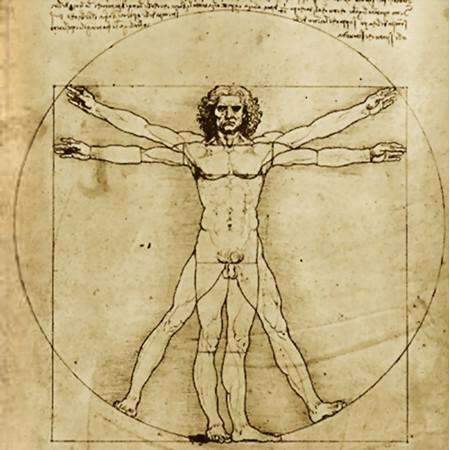 Eugenics
became a widespread public health initiative all across the
civilized world. Scientists tested and catalogued the mental
and physical abilities of mankind, and were pleasantly
surprised to discover that whatever race they themselves
belonged to turned out to be the healthiest, strongest,
smartest and handsomest specimens of humanity. Other races
fell far short of this ideal, so most countries tried to
filter lesser folk out of their gene pool. Mental patients,
habitual criminals and the destitute were often sterilized to
keep them from scattering their bad genes willy-nilly. In the
US, new laws kept immigration by scruffy, noisy ethnic people
to a minimum.
Eugenics
became a widespread public health initiative all across the
civilized world. Scientists tested and catalogued the mental
and physical abilities of mankind, and were pleasantly
surprised to discover that whatever race they themselves
belonged to turned out to be the healthiest, strongest,
smartest and handsomest specimens of humanity. Other races
fell far short of this ideal, so most countries tried to
filter lesser folk out of their gene pool. Mental patients,
habitual criminals and the destitute were often sterilized to
keep them from scattering their bad genes willy-nilly. In the
US, new laws kept immigration by scruffy, noisy ethnic people
to a minimum.
This is the backdrop against which fascism emerged. The State became paramount as the embodiment of the spirit of the Nation -- so did the Leader as the personification of the State. Many fascist ideals that seem so dangerous today were perfectly acceptable in mainstream thought of the early twentieth century, and most countries incorporated some fascistic elements into their everyday life. For example, light fascism infiltrated the United States at this time when the United States officially adopted a national anthem and a Pledge of Allegiance. On American coins, busts of dead presidents replaced mythic personifications of the land and freedom such as Indians, bison and Lady Liberty. This is why Stalin and Hitler seem so similar as we look back at them from eighty years away. Even though people at the time saw them as polar opposites because they rallied different groups of people (For Stalin, the workers; for Hitler, the Germans.) against different scapegoats (Stalin/Trotskyites, Hitler/Jews), they were both the products of their time and used the same techniques and imagery to consolidate and exercise power.
Despite the superficial similarities, communists and fascists were as different as bats and birds. Communists were all about change, while fascists preferred stability. Communists were avowedly atheist, while fascists were traditionalists. Communists believed in a universal brotherhood of workers across national borders, while fascists were intensely tribal. Communists wanted to redistribute wealth, while fascists believed in a natural hierarchy in which the superior dominated the inferior. Ultimately, fascism proved to be more popular in Europe because it made fewer changes to people’s lives. Fascism let people keep their religion, property and patriotism.
Italy
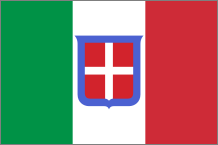 The
former Socialist Benito
Mussolini came out of the First World War furious
about how badly Italy was treated by its Allies, even though
they had won. Italy had sacrificed hundreds of thousands of
men and received almost nothing in return. Mussolini formed
the Fascist Party out of his fellow disillusioned
veterans and promised to restore Italy to the glorious days of
the Roman Empire.⑦ He
denounced the class warfare of Marxism in favor of national
unity. Devotion to the Italian state became the core of
fascism. To help this along, Mussolini organized the
paramilitary Black Shirts to intimidate the opposition; in
fact, their very first target in 1919 was Mussolini’s old
newspaper, the socialist mouthpiece Avanti.
The
former Socialist Benito
Mussolini came out of the First World War furious
about how badly Italy was treated by its Allies, even though
they had won. Italy had sacrificed hundreds of thousands of
men and received almost nothing in return. Mussolini formed
the Fascist Party out of his fellow disillusioned
veterans and promised to restore Italy to the glorious days of
the Roman Empire.⑦ He
denounced the class warfare of Marxism in favor of national
unity. Devotion to the Italian state became the core of
fascism. To help this along, Mussolini organized the
paramilitary Black Shirts to intimidate the opposition; in
fact, their very first target in 1919 was Mussolini’s old
newspaper, the socialist mouthpiece Avanti.
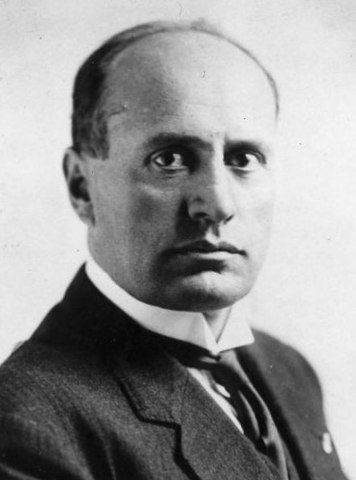 The
Fascists did not try to win control all by themselves.
Instead, they latched onto the traditional right wing like a
remora on a shark and rode them into parliament. In the 1921
elections, the Socialists squeaked out on top, winning one out
of four voters. Second place was the Italian Peoples Party,
Christian democrats of the center-right who got one out of
five votes. Close behind were the National Blocs, a far
right-wing coalition that included the Fascists. Although only
a fraction of a fraction, Mussolini’s fascists made the
biggest gains of any party in Italy, so the rest of the
National Blocs sat up and paid attention to how popular they
were.
The
Fascists did not try to win control all by themselves.
Instead, they latched onto the traditional right wing like a
remora on a shark and rode them into parliament. In the 1921
elections, the Socialists squeaked out on top, winning one out
of four voters. Second place was the Italian Peoples Party,
Christian democrats of the center-right who got one out of
five votes. Close behind were the National Blocs, a far
right-wing coalition that included the Fascists. Although only
a fraction of a fraction, Mussolini’s fascists made the
biggest gains of any party in Italy, so the rest of the
National Blocs sat up and paid attention to how popular they
were.
In October 1922, while the government was distracted by an unrelated general strike by Italian workers, 30,000 of Mussolini’s Fascists marched on Rome to demand control of the government. It was a pure bluff. They had no constitutional claim, and the Fascists were outnumbered and outgunned by the regular army, but King Victor Emanuel III didn’t want to start a civil war. He felt the Fascists were safer than the communists, and he broadly agreed with their goal of making Italy great again, so he appointed Mussolini prime minister.
Within a year, Mussolini had rewritten the constitution to give the top vote-getter in the next election an automatic 2/3 of the seats in parliament, as long as they got 25% of the votes or more. As prime minister already, Mussolini used every tactic to intimidate and weaken opposition voters. When Fascists won the 1924 elections as expected and packed into parliament, the Socialist leader Giacomo Matteotti stood up and denounced them loudly and rudely. Within a couple of weeks, Matteotti was kidnapped in broad daylight on his way to parliament and was found several months later brutally beaten to death.
Mussolini started bringing more and more government functions under his direct control. In October 1926, a teenage boy took a shot at Mussolini, missing widely. The boy was immediately lynched by Black Shirts, but it gave Mussolini the opportunity to clamp down on the opposition. All other parties were quickly outlawed and all future elections cancelled.
Meet the Nazis
Similar things were happening in Germany. Among the aimless, unemployed veterans in Munich was former corporal Adolf Hitler. An Austrian by birth, he hated the multiculturalism and modernism of Weimar Germany, and he imagined that Jews were conspiring behind the scenes to undermine everything that was good and decent about his adopted homeland -- an unfortunately common belief among the ultranationalists. They also found it significant and shameful that the very first action by the new republican government of Germany in November 1918 was surrender.
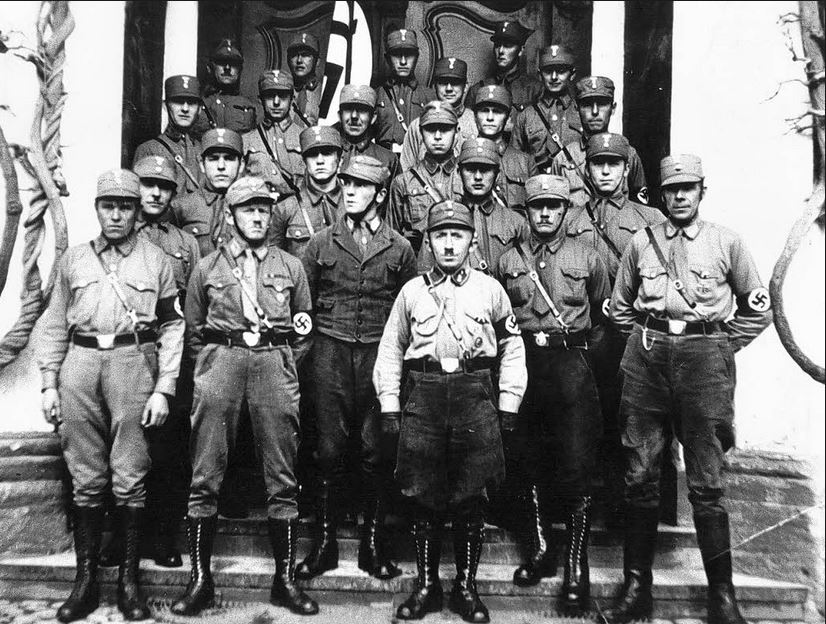 After
the war, Hitler stayed in the German army as an undercover
informant joining radical groups and spying on them for the
authorities. When the Versailles Treaty cut the army down to
100,000, Hitler didn’t make the cut. After being discharged,
he lived in Munich and kept his membership in the fascist
German Workers Party (DAP), which he eventually took over. He
had a natural gift for oratory, and was a master at working a
crowd. To broaden his party’s appeal, he tacked on a couple of
vague ideals that everyone likes and renamed it the
National-Socialist German Workers Party (NSDAP) which was soon
whittled down to “Nazi” from the German pronunciation of
National-Socialist (“Not/see/annul sought/seal/list”)
After
the war, Hitler stayed in the German army as an undercover
informant joining radical groups and spying on them for the
authorities. When the Versailles Treaty cut the army down to
100,000, Hitler didn’t make the cut. After being discharged,
he lived in Munich and kept his membership in the fascist
German Workers Party (DAP), which he eventually took over. He
had a natural gift for oratory, and was a master at working a
crowd. To broaden his party’s appeal, he tacked on a couple of
vague ideals that everyone likes and renamed it the
National-Socialist German Workers Party (NSDAP) which was soon
whittled down to “Nazi” from the German pronunciation of
National-Socialist (“Not/see/annul sought/seal/list”)
In November 1923, at the height of the French occupation crisis, Hitler tried to imitate Mussolini’s successful seizure of the Italian government. After working the mob into a frenzy and recruiting the popular General Ludendorff as frontman, the Nazis tried to seize control of the Bavarian state government in Munich, hoping to start a chain reaction across the country. Later ridiculed as the Beer Hall Putsch for the site of their rallies and the beerbellied reputation of Bavarians, the coup failed when the police lined up across their path and fired into the mob. Several marchers were shot dead, including a bodyguard who took the bullet meant for Hitler.
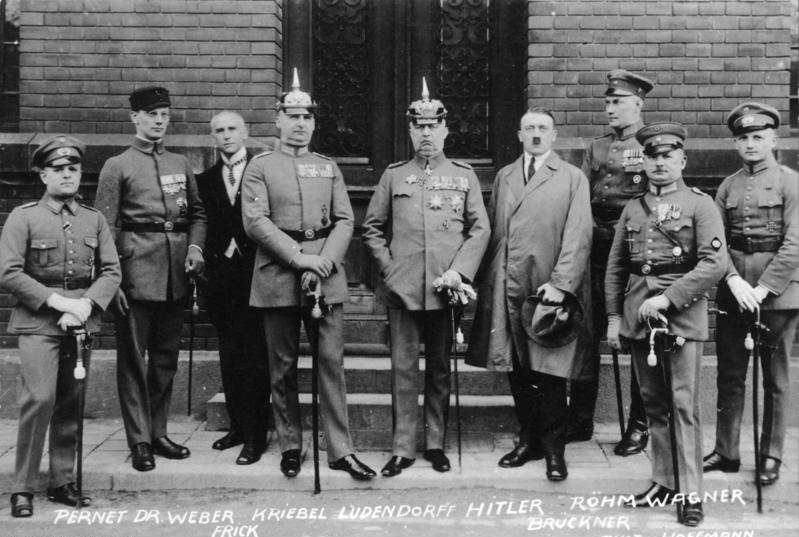 After
Hitler was captured and put on trial, his passionate speeches
to the court earned him even more followers among the
spectators. His secret worry was that Germany would deport him
back to Austria, but the judge was rather sympathetic to the
Nazi point of view, so he let Ludendorff go and gave Hitler a
light sentence in a minimum security prison resort. With
plenty of time on his hands, Hitler wrote My
Struggle (German: Mein
Kampf), his political manifesto and autobiography,
but his talent at oratory didn’t translate well onto the
written page. His dry and turgid writing sold few books.
Hitler faded into obscurity after this and was never heard
from again.
After
Hitler was captured and put on trial, his passionate speeches
to the court earned him even more followers among the
spectators. His secret worry was that Germany would deport him
back to Austria, but the judge was rather sympathetic to the
Nazi point of view, so he let Ludendorff go and gave Hitler a
light sentence in a minimum security prison resort. With
plenty of time on his hands, Hitler wrote My
Struggle (German: Mein
Kampf), his political manifesto and autobiography,
but his talent at oratory didn’t translate well onto the
written page. His dry and turgid writing sold few books.
Hitler faded into obscurity after this and was never heard
from again.
Well, we can dream, can't we?
Problems in Iberia and the Baltic
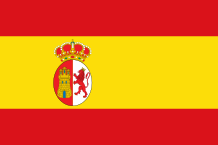 The
Spanish were fighting a messy colonial war in Morocco when
they suffered a terrible defeat at Anual in July 1921;
however, King Alfonso showed little concern over the enormous
loss of life. He continued his vacation at the beach while
thousands of Spanish corpses fed the vultures in the Moroccan
desert. Unpleasant rumors swirled around the king, who
reportedly drank, gambled and dismissed the dead with “chicken
meat is cheap”.Ⓒ In 1923,
enough popular resentment had built up for the Spanish
parliament to begin investigating charges that corruption in
the army and at the palace had led to the disaster. To put a
stop to their nosy meddling, army commander Miguel Primo de
Rivera took over the government. The king rubber-stamped the
coup and appointed Primo de Rivera as prime minster, who ruled
the next seven years as dictator.
The
Spanish were fighting a messy colonial war in Morocco when
they suffered a terrible defeat at Anual in July 1921;
however, King Alfonso showed little concern over the enormous
loss of life. He continued his vacation at the beach while
thousands of Spanish corpses fed the vultures in the Moroccan
desert. Unpleasant rumors swirled around the king, who
reportedly drank, gambled and dismissed the dead with “chicken
meat is cheap”.Ⓒ In 1923,
enough popular resentment had built up for the Spanish
parliament to begin investigating charges that corruption in
the army and at the palace had led to the disaster. To put a
stop to their nosy meddling, army commander Miguel Primo de
Rivera took over the government. The king rubber-stamped the
coup and appointed Primo de Rivera as prime minster, who ruled
the next seven years as dictator.
Next door, a military coup in Portugal overthrew the civilian democracy of António Maria da Silva on May 28, 1926. Because the First Republic had been inefficient and anti-Catholic, the coup against them was rather popular among the Portuguese at first, so authoritarian government settled in for a long stay. Most of the next half century saw Portugal under the semi-fascist regime of a stern and squinty professor of economics, António de Oliveira Salazar, who moved into the top slot from the Treasury in 1932 and ruled Portugal with an iron fist until an incapacitating stroke in 1968.
Lithuanian democracy only lasted a few years after independence. When the ruling right-wing Christian Democrats lost to a leftist coalition in the nation’s third parliamentary elections in 1926, a military coup quickly put the Christian Democrats back in charge. They never again made the mistake of offering the people a chance to vote them out.
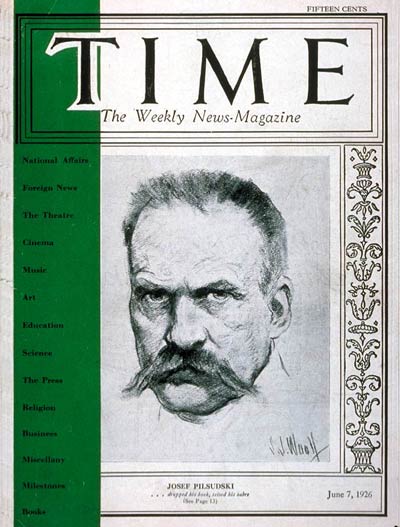
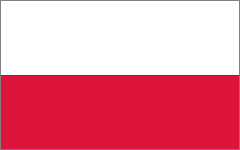 The
political history of interwar Poland basically boiled down to
how long they could last until Marshal Józef
Pilsudski -- former freedom fighter, popular war hero
and proud owner of 1926’s Mustache of the Year -- just took
over outright. He had been provisional president and virtual
dictator immediately after independence, but Poland’s 1921
Constitution had been specifically designed with a weak
presidency to discourage him from running for the office
again. He retired in a huff, but eventually changed his mind
and seized power in May 1926. Holding no official position, at
first he gently guided his country with suggestions and
recommendations, but pretty soon he just made all the
decisions and ran everything himself. Enough opposition
leaders remained in the public eye to keep the 1928
parliamentary elections generally fair (although essentially
pointless since parliament had little real power anymore), but
the next round of pretend elections in May 1930 returned a
majority from the opposition Center-Left alliance, so
Pilsudski disbanded parliament and threw 20 leaders of the
opposition in jail for a few years.
The
political history of interwar Poland basically boiled down to
how long they could last until Marshal Józef
Pilsudski -- former freedom fighter, popular war hero
and proud owner of 1926’s Mustache of the Year -- just took
over outright. He had been provisional president and virtual
dictator immediately after independence, but Poland’s 1921
Constitution had been specifically designed with a weak
presidency to discourage him from running for the office
again. He retired in a huff, but eventually changed his mind
and seized power in May 1926. Holding no official position, at
first he gently guided his country with suggestions and
recommendations, but pretty soon he just made all the
decisions and ran everything himself. Enough opposition
leaders remained in the public eye to keep the 1928
parliamentary elections generally fair (although essentially
pointless since parliament had little real power anymore), but
the next round of pretend elections in May 1930 returned a
majority from the opposition Center-Left alliance, so
Pilsudski disbanded parliament and threw 20 leaders of the
opposition in jail for a few years.
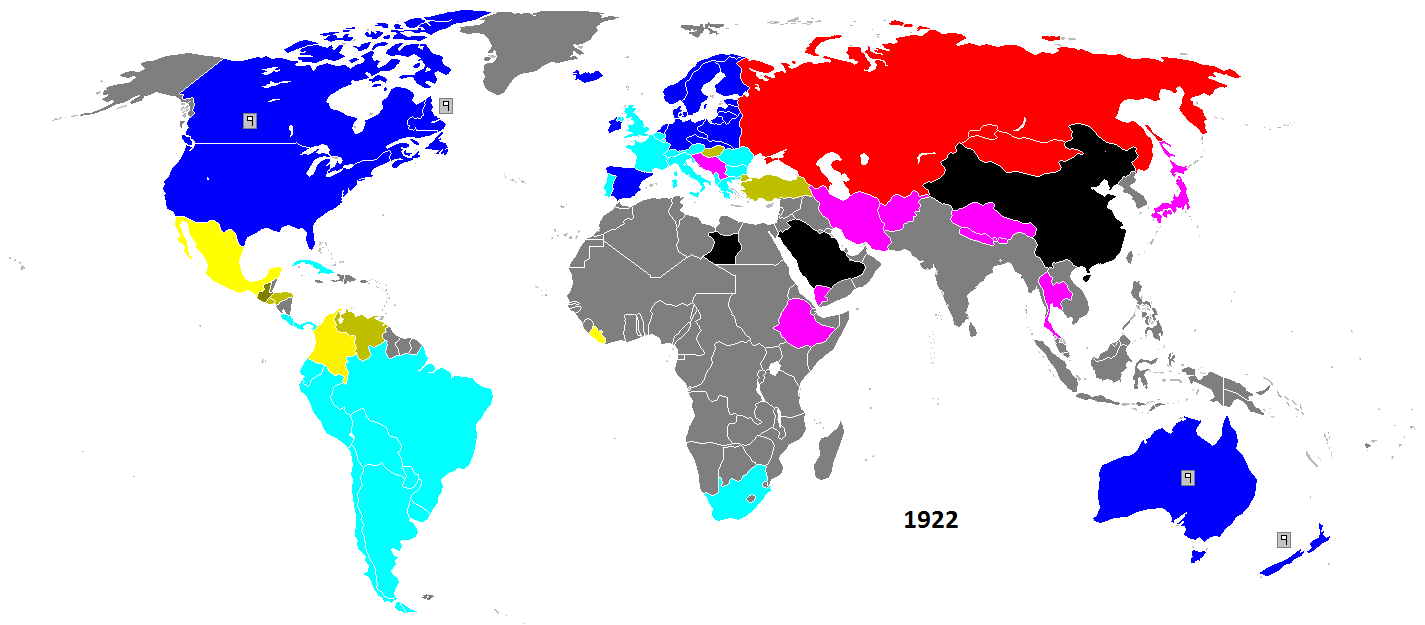

![[Previous Chapter]](images/previous_arrow.gif) |
![[Next Chapter]](images/next_arrow.gif) |
① Yes, I know that mainstream opinion considers the Versailles peace treaty to be a failure and Wilson to be a naive, impotent pawn, but my opinion (definitely the minority opinion) is that the failures of Versailles have been exaggerated by
- American statesmen trying to justify their isolationism and apathy during the post-war period,
- German statesmen trying to justify (or at least mitigate) launching the Second World War. ("Well, we had legitimate grievances."), and
- British and French statesmen trying to justify not standing up to Hitler early enough. ("Well, they had legitimate grievances.").
All in all, Truth, Justice and the American Way scored some major points with the treaty.
② Democratic constitutions that most of us (women too!) would be willing to live under were adopted in Finland (July 1919), Germany (August 1919), Czechoslovakia (February 1920), Estonia (June 1920), Austria (October 1920), Poland (March 1921), Lithuania (August 1922), Latvia (February 1922)
③ Monarchies have positives too. They are sparkly and majestic; they create a nonpartisan focus for patriotism, and (as I pointed out in my previous book) monarchies tend to be less murderous than republics; however, having an inherited institution at the core of your government should knock your Freedom House score down at least one notch. Calling a constitutional monarchy 100% democratic is like claiming to be a vegetarian when you still eat fish.
④ Bulgarian border guards shot a Greek soldier when he chased his runaway pet dog across the border. The Bulgarians apologized, but General Pangalos demanded punishment for the guilty, a more formal apology and lots of money from the Bulgarians. They refused, so he invaded.
⑤ Although the United States is among the most stable democracies in the world, it’s worth noting that 1 out of 5 presidents have either been forcibly removed from office or have come extremely close. (4 assassinations, 1 attempted assassination that hit the target, 3 impeachments and 1 resignation to escape impeachment.) This goes up to 1 out of 3 if you include two presidents who faced assassins but the guns misfired, one president wounded by gunshot after he had left office, and a president-elect who escaped harm although several around him were hit. (Let’s not even get into the plots that failed before they got close enough to point the gun.) Compare that to the single British prime minister assassinated during the same period.
⑥ Because the British had not been overrun and occupied by German troops in the war, they were more forgiving toward the German debt and protested the French-Belgian invasion.
⑦ Fascism was named after the fasces, ancient Rome’s ceremonial bundle of rods around an ax that symbolized the power of a leader to inflict both corporal and capital punishment by beating or beheading.
Ⓐ Scoring higher than 6 in the Polity IV database.
Ⓑ Martin Gilbert, History of the Twentieth Century: The Concise Edition of the Acclaimed World History (HarperCollins, 2002) p. 144; Eugene Davidson, The making of Adolf Hitler: the birth and rise of Nazism, (University of Missouri Press, 1997) p. 187; Peter Liberman; Does Conquest Pay?: The Exploitation of Occupied Industrial Societies (Princeton University Press, 1998) p. 95
Ⓒ David S. Woolman, Rebels in the Rif: Abd El Krim and the Rif Rebellion (Stanford University Press, 1968) p.102
Copyright © April 2019 by Matthew White
